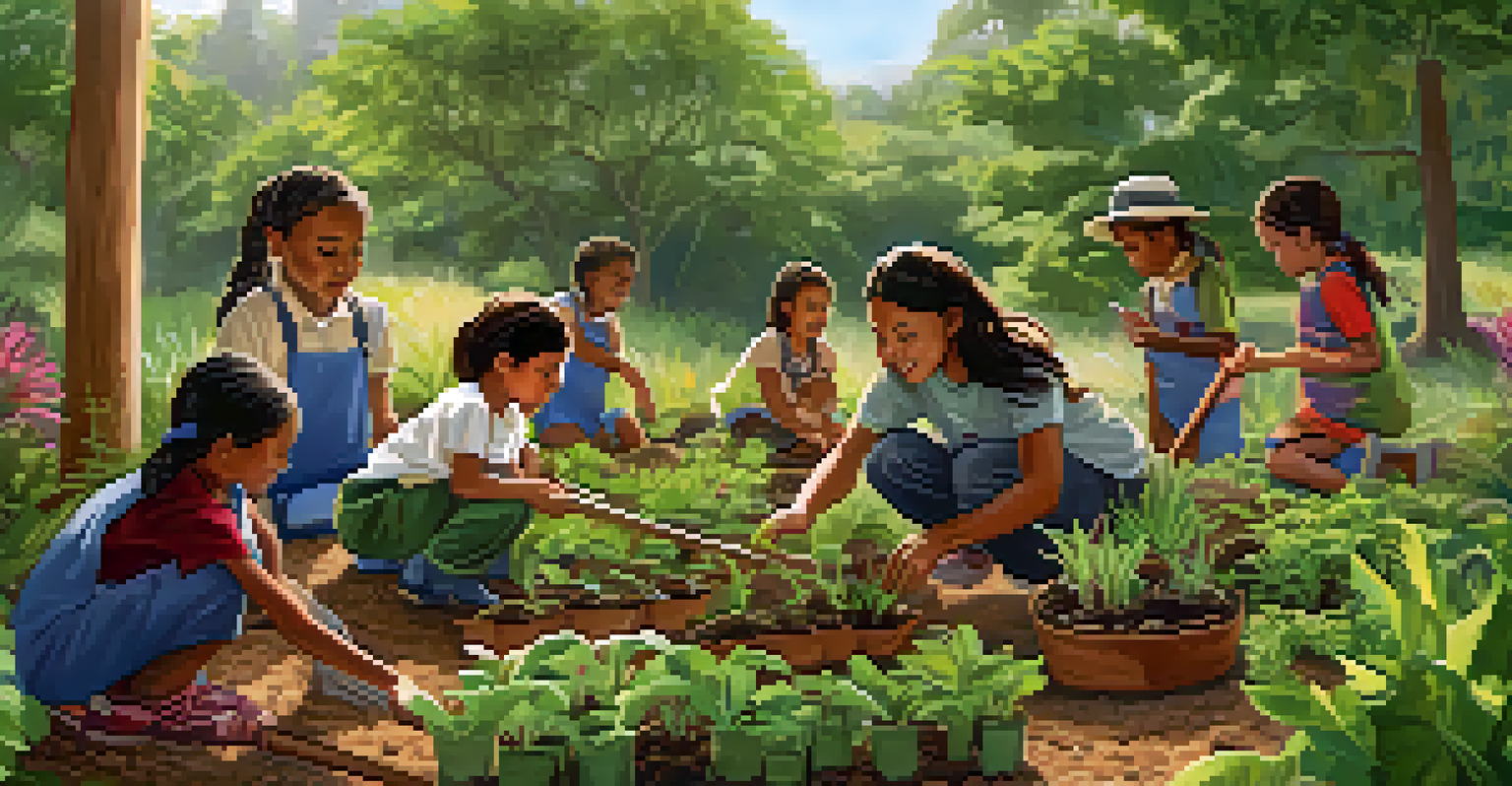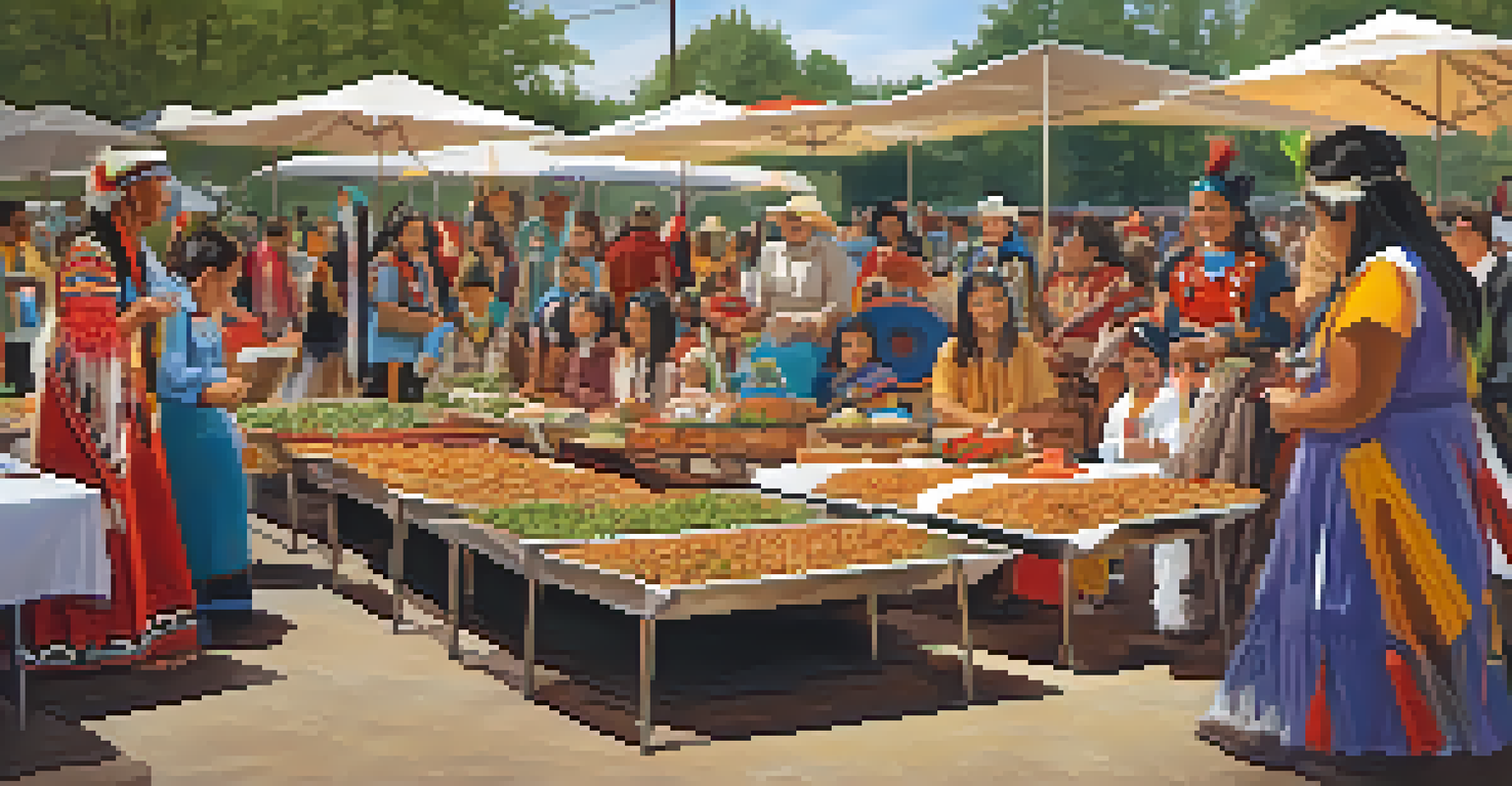Educational Programs: Learning from Native American Leaders

Understanding Indigenous Perspectives in Education
Indigenous perspectives in education offer unique insights that can enrich learning experiences. By integrating these viewpoints, educators can foster a more inclusive environment that values diverse knowledge systems. This approach not only benefits Native American students but also broadens the understanding of all learners.
Education is the most powerful weapon which you can use to change the world.
For instance, incorporating Native storytelling traditions can enhance literacy skills while teaching cultural values. Stories often convey lessons on ethics, community, and respect for nature, which are crucial for holistic education. By weaving these narratives into curricula, we celebrate cultural heritage and promote empathy among students.
Moreover, understanding the historical context of Indigenous education helps in addressing current disparities. Many Native American communities face systemic challenges, and recognizing these issues is the first step toward meaningful change. By learning from Indigenous leaders, educators can create programs that are not only relevant but also transformative.
The Role of Native American Leaders in Education
Native American leaders play a pivotal role in shaping educational programs that reflect their communities' needs. They advocate for culturally relevant curricula and support systems that empower Indigenous students. Their leadership ensures that education is not just about academic achievement but also about cultural preservation.

Take, for example, the work of leaders like Dr. Sarah Deer, who emphasizes the importance of incorporating Indigenous law and history into education. Her advocacy helps students understand their rights and heritage, fostering a stronger sense of identity. Such initiatives bridge the gap between traditional knowledge and formal education.
Integrating Indigenous Perspectives
Incorporating Indigenous viewpoints in education enriches learning and promotes inclusivity for all students.
Additionally, these leaders often serve as mentors, guiding the next generation in navigating both Indigenous and Western educational systems. Their presence in classrooms and schools provides students with relatable role models who share similar backgrounds. This connection can inspire students to pursue their educational goals while remaining grounded in their cultural identity.
Creating Culturally Relevant Curriculum
Developing a culturally relevant curriculum is essential for engaging Indigenous students. This means integrating Native American history, culture, and contributions across subjects rather than treating them as isolated topics. Such an approach fosters respect and appreciation for Indigenous knowledge.
The greatest legacy we can leave our children is happy memories.
For instance, in a science class, teachers might explore traditional ecological knowledge alongside modern scientific principles. This not only validates Indigenous wisdom but also enriches students' understanding of environmental stewardship. By blending these perspectives, educators can promote critical thinking and problem-solving skills.
Furthermore, involving Native American leaders in curriculum development ensures that the content is accurate and representative. Their expertise and lived experiences can highlight aspects of culture that might otherwise be overlooked. This collaboration between educators and community leaders leads to a more holistic educational experience.
The Impact of Language Preservation Programs
Language preservation programs are vital for maintaining Indigenous cultures and identities. When students learn their native languages, they connect more deeply with their heritage and community. This connection can motivate them to engage more actively in their education.
For example, programs that teach languages like Navajo or Lakota not only revive interest in these languages but also incorporate traditional stories and teachings. This integrated approach makes learning more relevant and exciting for students. As they grasp their cultural language, they also gain confidence in their identity.
Role of Native Leaders in Education
Native American leaders advocate for culturally relevant curricula, empowering Indigenous students and preserving their heritage.
Moreover, these programs often foster a sense of pride and belonging among students. When children see their language valued in educational settings, it reinforces their cultural identity. This empowerment can lead to greater success academically and personally, as students feel more connected to their roots.
Engaging Families and Communities in Education
Engaging families and communities in educational programs is crucial for student success. When schools collaborate with Native American families, they create a support system that reinforces learning at home. This partnership fosters a sense of community and shared responsibility for education.
For example, schools can host community events that celebrate Native American culture, allowing families to participate in their children's education actively. These gatherings can include traditional food, music, and art, making learning a community affair. This approach not only builds relationships but also enhances students' pride in their heritage.
Furthermore, involving elders and community leaders in the educational process provides students with invaluable wisdom and guidance. Elders can share stories and lessons that reflect their life experiences, enriching the curriculum. This intergenerational connection strengthens community ties while enhancing the educational experience.
Innovative Educational Models Influenced by Indigenous Leaders
Innovative educational models inspired by Indigenous leaders offer fresh approaches to learning. These models often prioritize experiential learning, hands-on activities, and real-world applications. This not only makes education more engaging but also relevant to students' lives.
For instance, some schools adopt land-based education, where students learn directly from the environment. They may participate in activities like gardening, fishing, or traditional crafts, which teach valuable life skills while connecting them to their culture. Such experiences foster a deeper appreciation for nature and community.
Language Preservation's Importance
Language preservation programs help maintain Indigenous identities and foster pride among students, enhancing their academic success.
Additionally, these models often emphasize social-emotional learning, recognizing the importance of mental well-being. By addressing the holistic needs of students, schools can create a nurturing environment that supports academic success. This innovative approach reflects the values of Indigenous cultures, which prioritize community and interconnectedness.
Challenges and Opportunities in Indigenous Education
While there are significant strides in Indigenous education, challenges remain. Many Native American communities still face underfunded schools and limited access to resources. These barriers can hinder the implementation of effective educational programs and limit opportunities for students.
However, these challenges also present opportunities for growth and advocacy. By raising awareness about educational disparities, Indigenous leaders and allies can push for policy changes that benefit their communities. The rise of grassroots movements highlights the power of collective action in driving change.

Moreover, increased collaboration between Indigenous communities and educational institutions can lead to innovative solutions. Sharing resources, knowledge, and expertise can create a more equitable educational landscape. Together, these efforts can ensure that Indigenous students receive the education they deserve, rooted in their culture and values.